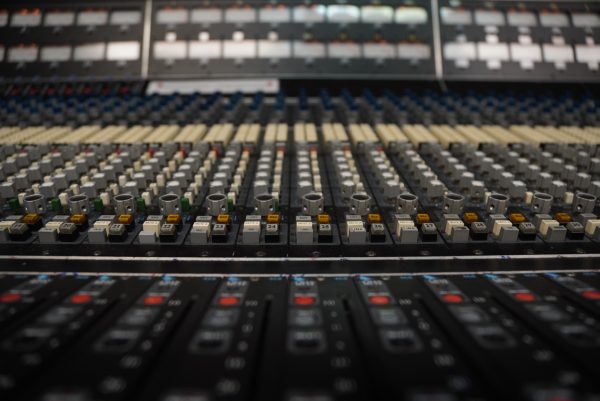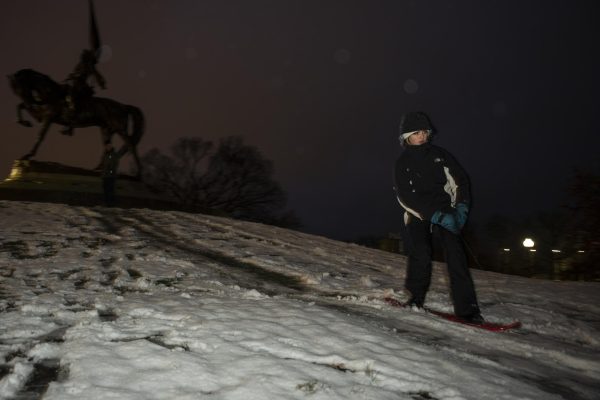South side artist honors fallen victims of gun violence
February 29, 2016
Garland Martin Taylor has held many jobs in his life, including tile setter and construction worker, culminating in his current position—a sculptor with a mission to engage people in social justice.
Taylor, 46, created a sculpture titled “Conversation Piece,” a 400-pound stainless steel revolver made of old South Side scrap metals weldings with imprints of names of people ages 20 and younger who have been victims of gun violence around Taylor’s Hyde Park home.
“It’s every day,” Taylor said. “You wake up, you hear it on the news, you wake up, you go to bed, you hear it on the news. You’re checking your Facebook and therefore everywhere you look, there are these stories about these shootings.”
Taylor, who works out of a warehouse studio in McKinley Park, decided to make a socially engaging piece that would spark discussion throughout Chicago and beyond the city limits as well.
Taylor received a Mellon Residential Fellowship for Arts Practice and Scholarship at the Gray Center for the Arts and Inquiry at the University of Chicago during 2014 and 2015 when he co-taught a course, “The Politics and Art of Black Death,” with Cathy Cohen, professor of political science at the University of Chicago, and Orlando Bagwell, a documentary filmmaker and producer.
Cohen said Taylor has influenced her teaching methods and her pedagogy is forever changed because of his ability to spark a dialogue in the classroom.
“He helped me and all the students think differently and expansively about how to think about and express our concern with the issue of death and violence in black communities,” Cohen said.
During his fellowship, Taylor studied the first well-known black political cartoonist, Henry Jackson Lewis, and looked at how the artist combined aesthetics with a strong message. With gun violence persisting in Chicago, Taylor decided to create an art piece that could make people think, discuss and react to tragic deaths.
“From an aesthetic point of view, I was interested in making … a three-dimensional political cartoon,” Taylor said. “A gun is a three-dimensional political cartoon. It makes a statement, it creates poetry and it’s nuanced, and that’s what [a] political cartoon is.”
Originally, Taylor wanted to create a revolving door to represent the issue of death because he saw death as something constantly in motion. But one day, Taylor went into a store and saw a “No Firearms” sticker and thought about all the data he collected of teenagers who died of gun violence and the conversation began to form.
“When I saw that all of that data and sticker of no guns, it was like the political cartoon was there,” Taylor said. “It was a year of thinking about it. It was three years of thinking of political cartoons that guided me toward making a body of work about social justice issues.”
After Taylor created the piece, he drove across the country to share it with people outside Chicago. He shared his piece with barbershops because he said that is where many conversations occur, especially in the
black community.
“That’s what I learned on the trip,” Taylor said. “It boiled down to that the only way to solve these problems and the way to get to peace is through compassion. How can you have compassion if you’re not talking with anyone? As long as the topic keeps being brought up, I’m keeping it alive. Everything comes when it comes.”
David Simons, Taylor’s godson and a senior at Kenwood Academy High School, said as an artist, Taylor’s compassion is what keeps him doing what he loves.
“[Yesterday] we were in the car and he got a call, and was making plans to go to Arkansas or something,” Simons said. The person on the phone said, ‘We can fly you there.’ But he [Taylor] said, ‘I’d rather drive.’ I was like, ‘It’s an 11-hour drive. I [asked] ‘Why would you wanna drive?’ He just said so he can take the gun with him and show it to the world. And I just said that’s just so genius. He’s always looking and thinking two steps ahead.”








